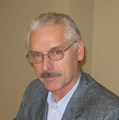DOWNLOADABLE RESOURCE: “Through the building blocks approach that has defined the EAP program, we have reached a point where a number of hydra-like concepts have been tamed to become the Riparian Deficit,” stated Tim Pringle (August 2021)

“It took a building blocks process to bridge from the starting point — how EAP looks at the ‘stream as a whole-system’ (rather than as an amorphous ‘natural asset’) — to reach the destination, which is a methodology plus meaningful metrics for measuring the Riparian Deficit, the environmental equivalent of the Infrastructure Liability (Deficit) for constructed assets; and establishing budgets for Maintenance and Management,” stated Tim Pringle.










